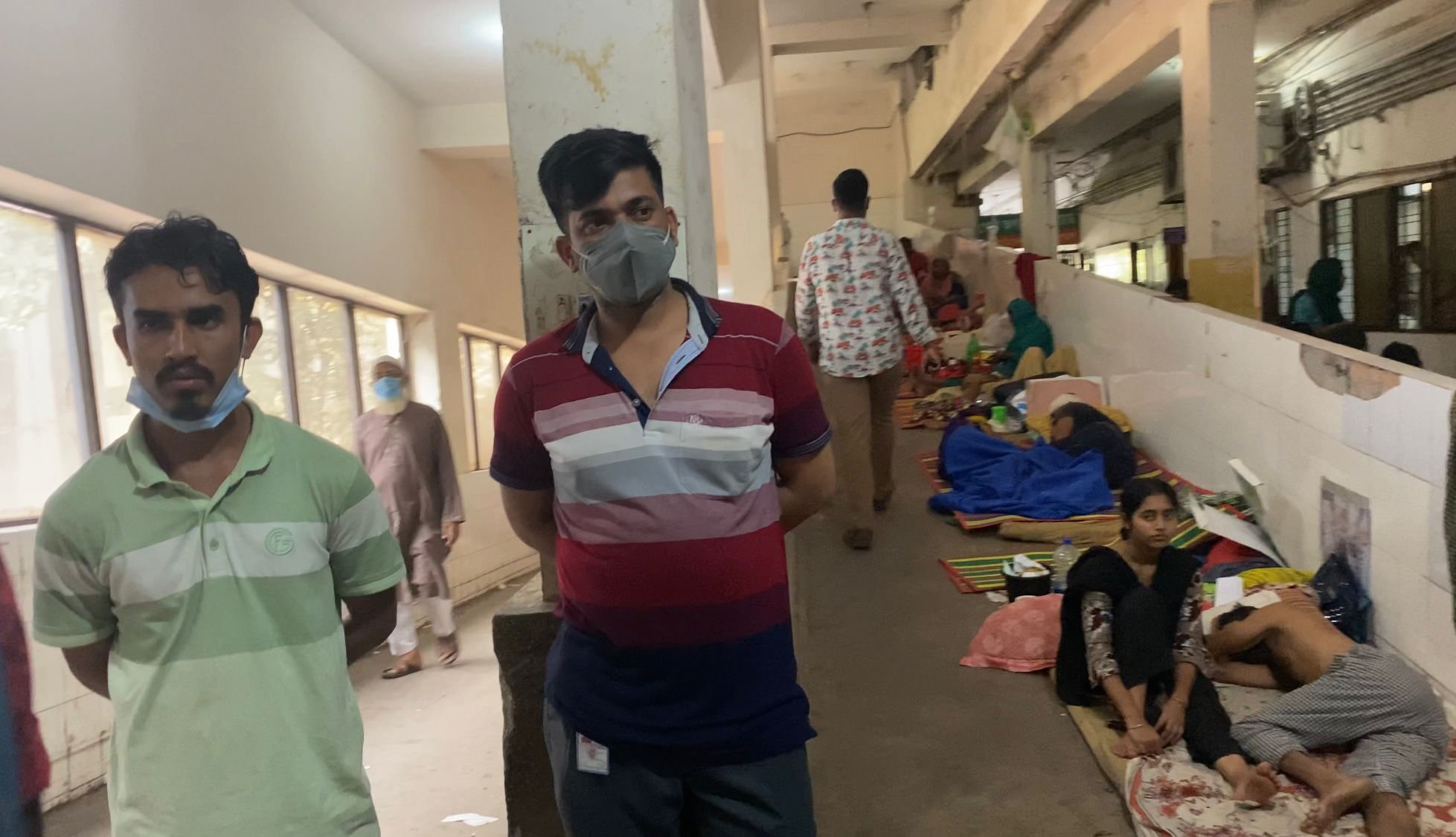Visiting Dhaka Medical College
I didn’t know what to expect when Jewel (World Child Cancer’s rep in Bangladesh) organised a talk at the Dhaka Medical College. I’ve done visited many different hospitals: from state-of-the-art in the Netherlands, to the plush and international hospitals of Delhi to spartan yet friendly hospitals in Kosovo. After the initial shock and sense of helplessness of being on the other side of the “fence”, I’ve become fairly accustomed to seeing people on chemo, even if it is a painful sight, and partially shut off the reminders of my own experiences in hospital.
However, I wasn’t prepared for the Dhaka Medical College. It’s a government hospital in the centre of Dhaka. After meeting a couple of CanLivers and doctors Jewel offered to show me and Neda the rest of the hospital. I almost declined – after all, I had done “my” bit: the talk. What was I going to add?
But I nodded, and Neda and I followed Jewel back in. Neda’s father was a doctor and Neda had spent large chunks of her childhood visiting and helping out in hospitals. She had a big smile, a zesty sense of humour and a large heart. We took a right turn and entered the main lobby, with a series of long ramps forming the staircase. The grey concrete ramp was about three metres wide, but I could only see half of it. Lying on the right side was person after person, on blankets, in bandages, clutching heads, cradling shoulders, quietly groaning, barely breathing, eyes listless. Their line was unbroken, their heads at my feet.
The corridors of Dhaka Medical College.
“Treatment here is meant to be free,” Jewel told me, “which is why everyone without much money comes here. Though, of course, even a bit of money helps things along here.”
We walked on. The corridor was no different. It was filled with people lying prone on the floor. It was difficult to look. It was difficult to look away. It was profoundly uncomfortable to see humans in such conditions. Not lying in a hospital bed, with an ECG, a team of nurses attending, sunlight streaming in, fresh disinfectant in the air – as any Western TV drama will show you. Instead, they were crammed into a corridor with rushed and harried doctors striding past or holding up x-rays to the window, with humid, hot, stale air filled with all manner of human smells. I walked past one man lying on his side. The flesh of his lower back had broken down, and a bone stuck out. We walked on.
When I had chemotherapy, I had an en suite room to myself, with a sofa bed for my parents, a Dyson fan, and a bed with a duvet and sheets (this was a Teenage and Young Adult ward, a project of the Teenage Cancer Trust, one of our charity partners). Despite all of this, chemotherapy was still a very grim experience. Almost any smell made me feel sick, but I was immensely grateful for being able to do chemo on my terms – which sometimes involved cycling on my bike indoors.
Jewel took us in to the paediatric chemotherapy ward. My breath caught in my throat.
A mass of humanity confronted me. It seemed the whole room was filled with beds, people, drips and the muted colours of a hundred saris. There were two or three people sitting or lying on each bed. It was overwhelming. How much tougher an experience these children and mothers were going through than I did. I looked across at Neda. There were tears in her eyes, and trickling down her face. As a mother with a young child herself, the discomfort of the children and mothers must have felt very real. “I’ve seen this before, but it gets me every time,” Neda said, wiping at the corners of her eyes.
The paediatric oncology ward.
We didn’t spend long in the room. It felt voyeuristic and the nurses and patients didn’t need a distraction. I placed a Union Jack teddy bear on the table. We walked on.
The challenges faced here in Bangladesh are far beyond what I had seen in other countries. And, almost unbelievably, these children were the lucky ones: to have been diagnosed, to have been able to travel to Dhaka, and afford treatment. The majority of children with cancer never make it to hospital. I felt despondent leaving the hospital and also unable to understand how doctors and nurses could work there. It seemed such a depressing and grim place.
A few days later I met Neda’s father, Cyrus. He left Iran 46 years ago for medical studies and Bangladesh has become his adopted home. How had he managed to stay upbeat?
“Luke, I see the progress. 30 years ago, all these people you saw in the corridor, they would have rotted in their villages and been eaten by insects.”
My eyes widened.
“Now they are being treated in hospital. When I started as an orthopaedic surgeon, I was the only one. Now I have a team of 20 surgeons under me. In fact, we have come a very long way.”
This conversation changed my perception of what I had seen. Yes, in many ways it was desperate, but that didn’t mean huge progress hadn’t been made.
But it needs to continue.
This is where World Child Cancer comes in, in Bangladesh. They are trying to improve care and support for families navigating the scary world of cancer.
They provide families with money for transport, accommodation and medication, which can make all the difference between a child making it to hospital and completing treatment. Their work doesn’t fix the overloaded system, but helps many children be cured, giving them the chance to guide Bangladesh to a brighter future and a better health system.
Please support World Child Cancer’s work by donating here: https://www.gofundme.com/f/ghcus-bristol2beijing
Leaving the teddy bear felt pretty inadequate.



